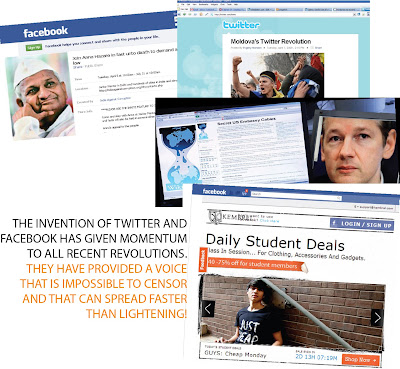FAMILY MATTERS
The world is getting more and more virtual. Thanks to social networking and mobile phones, we are spending more time nurturing relations on-line than face to face. Most of the time, families aren’t ‘together’ even though they may be living under the same roof. Everyone is in their own world enjoying virtual company more than each other’s company. Small wonder that today people are increasingly realising the importance of family, even as they fight the 24X7 busy lifestyle.
Going the family way
A whole lot of marketers are flocking to the virtual world and marketing their products on various websites, but advertisers have discovered a new trend, a new way of attracting consumers. It’s the ‘family mantra’. With even children bemoaning the lack of family time, this is one theme which today is attracting consumers like never before. Everyone is frantically looking for some way in which they may squeeze in quality ‘family’ time into their busy schedules. And those who can show them how to, are assured of rich benefits.
The original Xbox was targeted at hard core gamers. The brand endorser was the stereotypical young male dressed in black and living independently. That was six years ago, in 2001. Today Microsoft wants to position Xbox as a connector that brings people together. The positioning seems to attract more buyers and hence is more profitable to the company. They have realised that family games like ‘Uno’ and ‘Pac-man’; and less violent games like ‘Scene It? Lights, Camera, Action,’ have a bigger market than the hard-core violent games.
Santro shot to popularity when Shah Rukh claimed “Hum Santro Wale Hai”, meaning the hatchback from Hyundai’s stable was the car of intelligent and smart families. Chrysler is now marketing its mini-vans with a new tagline – “Family room on wheels.” Toyota’s Innova was launched in India as a car with enough space for the whole family. After all, as Indians we prefer to do everything with the family in tow. Our trips and holidays are incomplete without pappa, mammi, daddu, mini, guddi & company, right?
Surprisingly ‘family time’ is catching on in the rest of the world, too. After 9/11, people became far more introspective and family travel increased. Similarly, overburdened and guilty parents find it imperative to take kids along on vacations. All travel agents with vacation plans that include and entertain children, find their businesses booming now. Even an outdoor adventure oriented tour operator like Austin-Lehman, realised that families accounted for 50-55% of their business. Small wonder that most travel agents are now modifying and customising their packages (beach and lake vacations, theme parks, cruises) to accommodate kids.
Panasonic decided to spend sometime, researching and finding inventive ideas to furnish fun and quality time for families. Its new punchline is “Bring back family time.” High definition flat TVs, which till now were marketed as symbols of success to young professionals, are today being marketed as a means of getting the family being together.
Toys were either bought as gifts or to appease a yelling child. Well, not anymore. Today, toys that have been certified and approved by “Parenting Center Seal of Approval” sell more because – yes, you guessed it right - they help families spend more “family time.” Mattel introduced a game named “Chatter Matters” to encourage families to talk (chatter) and share their feelings about various topics (matter). The game would help parents communicate with their teenage children and help Mattel fight competitors.
Food-n-Family
A staggering 83% of parents today believe family dinners contribute to their child’s success in school. Yet only 70% manage to eat together four nights a week. Anyone offering them quality food with ‘family time’ thrown in as bonus, is catching their attention. McDonald’s, no more advertises its outlet as one only for kids. Its “I’m loving it” theme cuts across all age groups. To encourage entire families to come over, the QSR chain is now planning to put nutritional values as per age groups on the wrappers of each product.
Domino’s realised that 70% of the orders were from families. So it announced its ‘fun meal for 4’ – after all, when families order together, they look for variety. Add to that, Domino’s value for money USP and the management is confident of keeping Pizza Hut away.
Once restricted to just Hrithik and Aamir, Coke has moved ahead with times. Its new theme, the ‘Coke side of life’ is now about friends & families connecting & sharing. With the holiday season just round the corner - companies too are realising that making families eat together makes more money for them.
Families that sing-n-dance together
“It’s all about loving your parents” was how the very popular blockbuster Kabhi Khushi Kabhie Gham was promoted. Families flocked into theatres to cry, laugh and smile together with the actors on screen. Hum Aapke Hain Kaun broke many box-office records, as parents & grandparents continued returning to the theatres for more. Bollywood history is proof that nothing works like family films. The 1940s saw films like Ghar, Sansar et al, which were touted as ‘for women’ movies. Today, they have found a new avatar in Ekta Kapoor’s K-brand of telly soaps, which are giving every other serial a run for their money. If yesterday’s Baawarchi was hugely entertaining, then so is today’s Cars of Disney Motion Pictures.
According to Movieguide, the percentage of family oriented films has risen from 6% in 1985 to 45% in 2002. G-rated films yielded the highest gross profits on an average, as compared to PG or R-rated films. After all, it makes more business sense to sell four tickets to a family than one ticket to a teen or adult!
Families of the future
Of course, ads emphasising family unity seem to be working well, but here’s a word of caution. The definition of ‘family’ is changing simultaneously. Parents of the future may have fewer children; or may not be married. Couples may be child-less by choice, many preferring to adopt. One needs to keep these factors in mind, while depicting families in advertisements.
Companies like Ikea, J.C. Penny are already showing people of different skin colours and races – as a family. American Express showed a couple getting a call informing them that there was a child waiting for them in China. Kodak showed a Caucasian couple on an airplane holding an Asian baby. The caption, ‘The flight takes 12 hours, taking the picture takes 2.5 seconds.’
As George Santayana once said, “A family is one of the nature’s masterpieces.” Marketers and advertisers can’t agree less. They are generating huge profits from ‘the family’! Just as ‘family packs’ of goods generate larger volumes of sale for companies, compared to small or regular size packs, similarly ‘family themes’ in ads captures more attention.
Here’s a word for all those creative geniuses. While planning ad campaigns in future, don’t forget to include chacha, mausi, dada, nani, tau, pappu, chintu, mummy and papa... after all family does matter.


Comments
Post a Comment